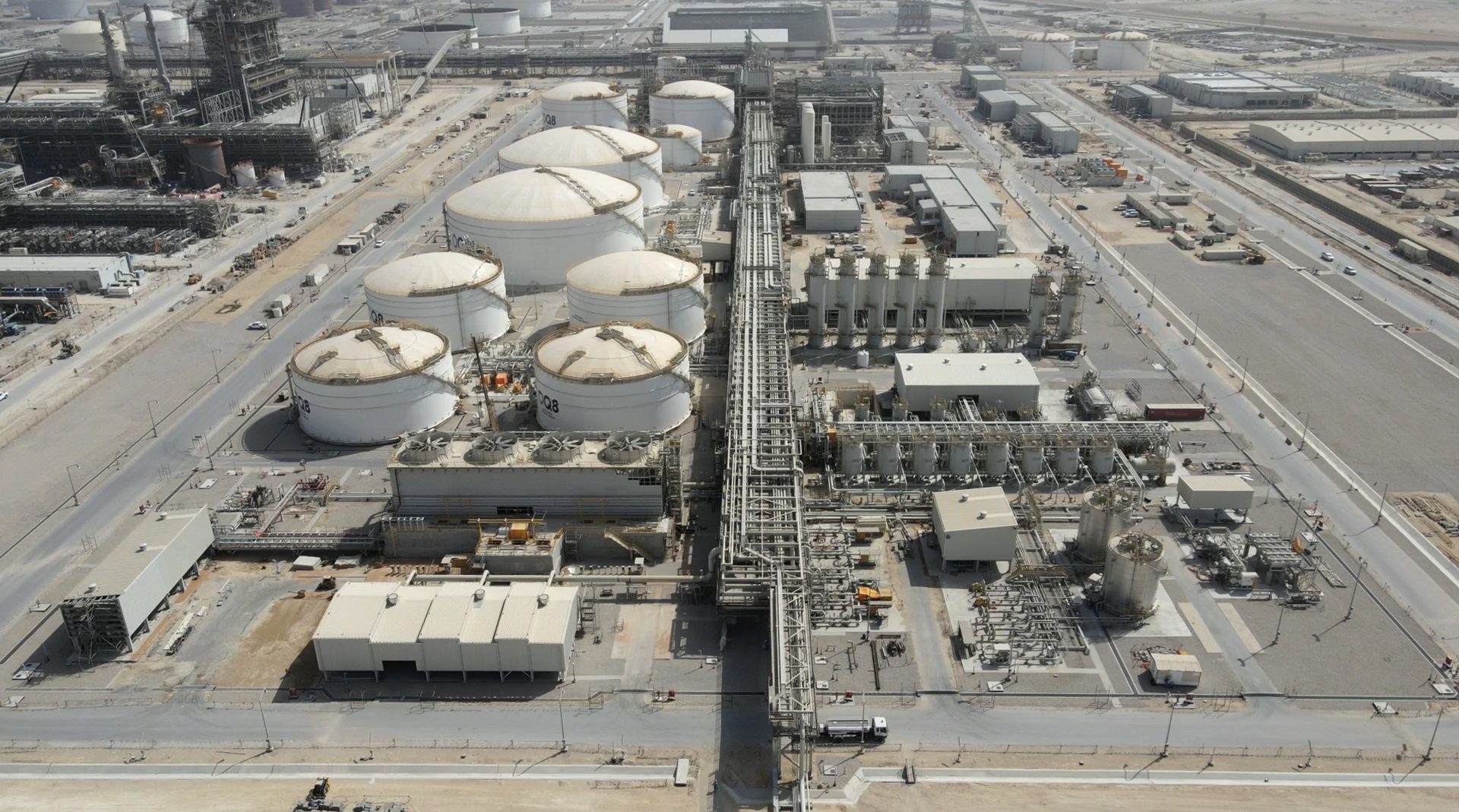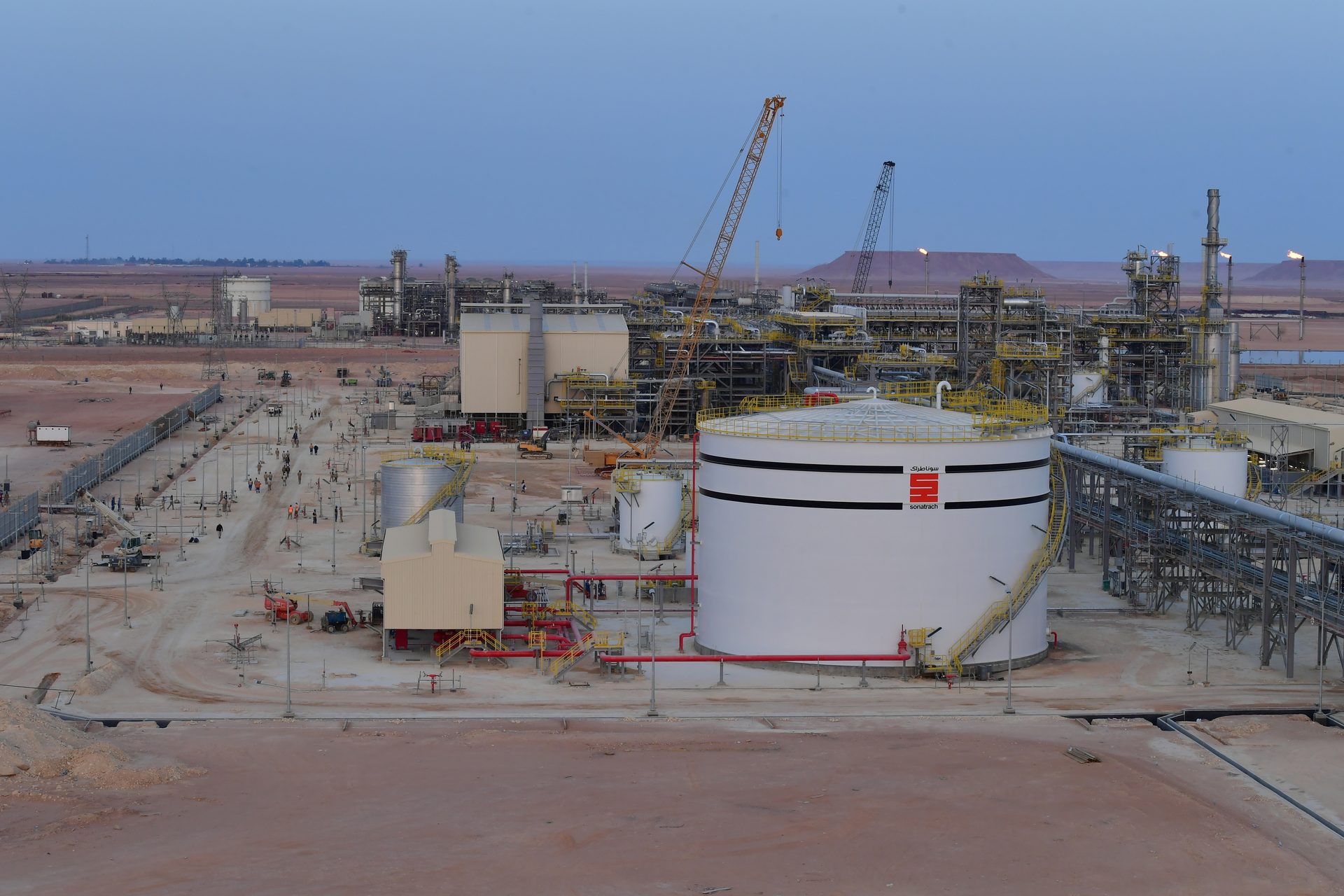BUILDING ON OUR TRACK RECORD IN OMAN
BUILDING ON OUR TRACK RECORD IN OMAN
FROM SAND TO START-UP
MAKING MIRACLES IN OMAN
WORDS ESSAM ALJAEDY
PUBLISHED MAY 2023
WHere we work
WITH THE DUQM REFINERY PROJECT IN OMAN SCHEDULED TO BE COMPLETED BY THE END OF 2023, PETROFACTS LOOKED BACK AT SOME OF THE KEY PROJECT MILESTONES AND THE CHALLENGES FACED IN ACHIEVING THEM
HOW WE WORK
FROM SAND TO START-UP
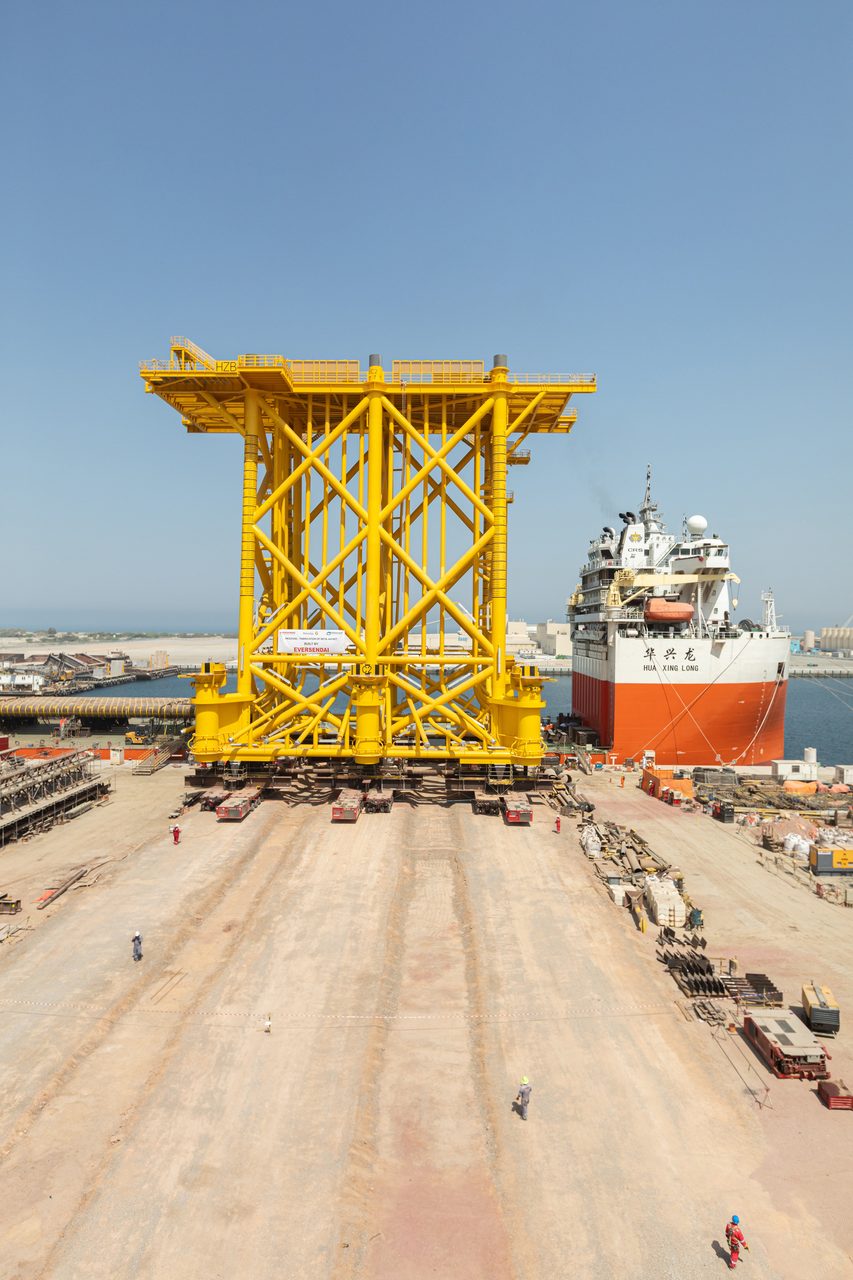
Adam Cheesman is marking one year since moving to Perth in Australia permanently from the UK. As Operations Director he was tasked with growing our business in the region.
“I was sitting in Aberdeen 18 months ago, finalising the strategy for the market entry of our Operations business and growth of the overall business,” he recalls. “To be sat here now and looking back over the past year, we have achieved what we set out to do despite the challenges that Covid-19 has thrown at us.
“We now have a stronger business after putting the foundations for growth in place, we‘ve increased our brand recognition, we have a team that is growing to meet the demands of the new work we have secured. We’re on the right path.”
Antipodean ambitions
THERE’S OPPORTUNITIES APLENTY IN AUSTRALIA AND NEW ZEALAND, AND WE’RE WELL PLACED TO SEIZE THEM – AS OPERATIONS DIRECTOR ADAM CHEESMAN AND REGIONAL DIRECTOR JOSIE PHILIPS EXPLAIN
WORDS CHRISTINA McPHERSON
PUBLISHED SEPTEMBER 2020
WHere we work
The world’s highest waves are thought to be formed in the Atlantic Ocean, south of Iceland, which then come barrelling down the North Sea. The highest single wave ever measured by a fixed installation anywhere in the world was in the North Sea on January 1, 1995 – a terrifying 25.6 metres, three times the size of the tsunami waves that devastated Sri Lanka and Thailand in 2004. So when TenneT entrusted Petrofac with the contracts to design, supply and install the substations for their massive offshore wind farm projects in the North Sea, perhaps the most vital element was the substructure, or jacket, that will need to support the substations for the next 30 years.
Anchored to the seabed, jackets resemble giant, multi-legged, rectangular tables. They’re made to provide a stable, secure and long-lasting base for new high-voltage electricity substations.
For the jackets completed and shipped for the HKZ project this means being able to withstand the worst the North Sea can throw at them.
The jacket trays – or ‘cable decks’ - are the surfacing point for the underwater cables (J-tubes) carrying power from offshore wind turbines into the substations. The substations then ramp up the voltage and transmit it to a land station to be distributed to the relevant national grid.
DESIGNED TO LAST
The process starts with a huge amount of computer analysis and simulation, says Lead Structural Engineer Anand Balasubramanian.
“Each jacket design is unique and there are many variable parameters. We factor into our calculations all the environmental loads and site conditions specific to each location, including water depth, soil type, waves, winds and currents – and how these might change over the next century.”
This data is then used to design the jacket, determine how many piles will be needed for the foundations, what size they need to be and how deep below the seabed they must penetrate. The HKZ jackets, for example, at 50 metres long, 34 metres wide and 44 metres high, are anchored to the seabed by six piles, each weighing 162.5 tonnes. They are buried up to 50 metres deep in the sea bed.
“We also factor in scenarios like, what if a ship collided with our structure? Our simulation enables us to design a jacket that could withstand such a force,” says Anand.
The design also takes into account the fact that the jackets will be loaded onto transportation barges, how long the voyage will be and the potential movement of the barge in the waves from side to side and up and down. Whether the jackets can travel in a vertical or horizontal position (depending on height clearance in the Suez Canal, for example) also has a bearing on the initial design and fabrication sequence.
A major influence is the intended lifespan of the jackets. In the case of the HKZ jacket, that is around 30 years – with minimal maintenance. The platforms will not be manned, so any offshore repairs would be extremely expensive.
“Finally, we have to design each jacket and its foundations in a construction and installation-friendly way. It’s no good coming up with a clever design that ticks all the technical boxes if it’s too complicated or costly to make or put in position,” says Anand.
WHEN IT COMES TO DESIGNING, ENGINEERING, BUILDING AND INSTALLING AN OFFSHORE JACKET THERE’S NO SUCH THING AS ONE SIZE FITS ALL. BUT WHAT EXACTLY IS A JACKET, AND WHAT GOES INTO ITS MANUFACTURE? PETROFACTS SPOKE WITH SOME OF THE TEAM BEHIND THE FABRICATION OF OUR JACKETS FOR TENNET’s HKZ offshore grid connection project TO FIND OUT…
TAILORED TO PERFECTION: THE STORY OF A JACKET
PROJECTS
WORDS RICHARD LOMAX
IMAGES CHRISTOPHE VISEUX
PUBLISHED SEPTEMBER 2021

Anand Balasubramanian
It would be naïve to expect a project that is delivering one of the largest oil refineries in the Middle East to breeze through without any challenges. Working to a tight schedule and against the unprecedented hurdles that the COVID-19 pandemic brought, the Petrofac team on the Duqm Refinery project in Oman has dealt with every obstacle head-on and come out cheering.
Petrofac’s scope on the project is the utilities and offsites package (EPC 2), a joint venture with Samsung Engineering that Petrofac is leading. Speaking to Petrofacts, colleagues in Duqm are frank about the challenges they faced to achieve significant milestones on schedule. They describe the outside-the-box thinking that was often required to pull them off.
“What the team has achieved since 2018 in turning an empty patch of land on the edge of the Arabian Sea into the giant oil refinery that exists today is simply astounding.”
Ian Debattista, Project Director
ESTABLISHMENT OF THE TEMPORARY SITE FACILITIES
In June 2018, the ink had barely dried on the signed contract to commence in Duqm when Petrofac colleagues reached for their hardhats and arrived on site eager to get started. Excavation and foundation work, as well as the fencing around the site quickly followed, representing ground-breaking activities at the inauguration ceremony in September that year. The building of temporary site facilities, including satellite offices and a warehouse to store building materials also began and were completed mid-way through 2019.
June 2019
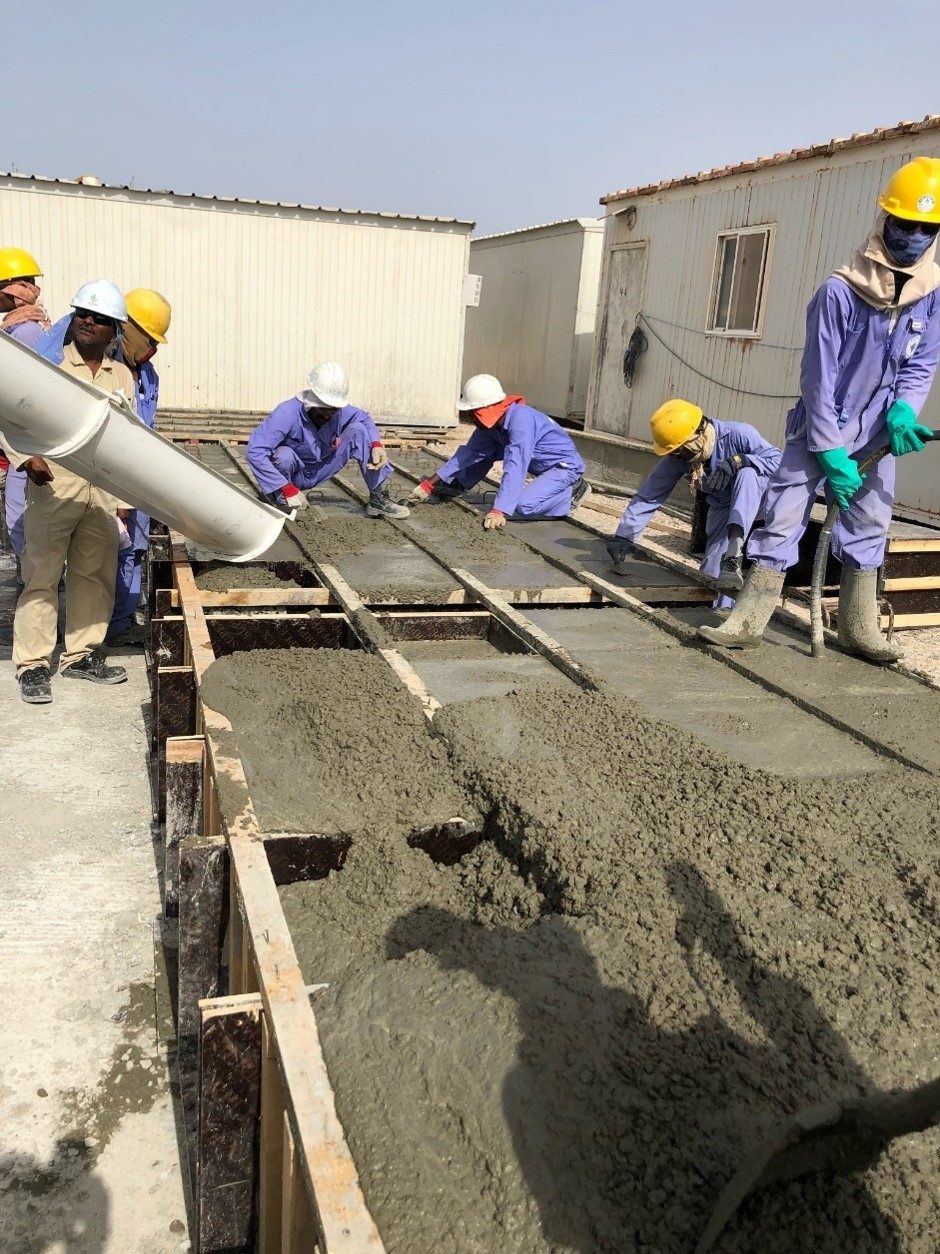
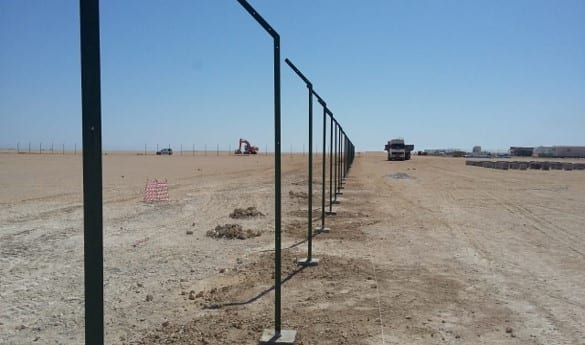
THE DUQM REFINERY PROJECT
THROUGH TIME
DELIVERY OF THE FIRST LPG BULLETS
Over the course of a month, nine bullets – used to store large quantities of LPG – arrived on site. Their extraordinary size meant that movement had to be planned meticulously. They were transported to Duqm by barge in batches of three from Sohar, Northern Oman, where they had been fabricated. The vendor and engineering team worked very closely on their design, ensuring the right weight and thickness of each vessel to withstand the challenging design conditions of internal and external pressure, along with cryogenic temperatures. This was crucial as the bullets are now stored underground side-by-side hidden by a mountain of earth and cement to maintain a suitable temperature for the LPG inside and absorb all energy in the unlikely event of an explosion.
January 2020
“It’s weird knowing that they are under there. The bullets were a work of art but no one will ever see them.”
Ian Debattista, Project Director
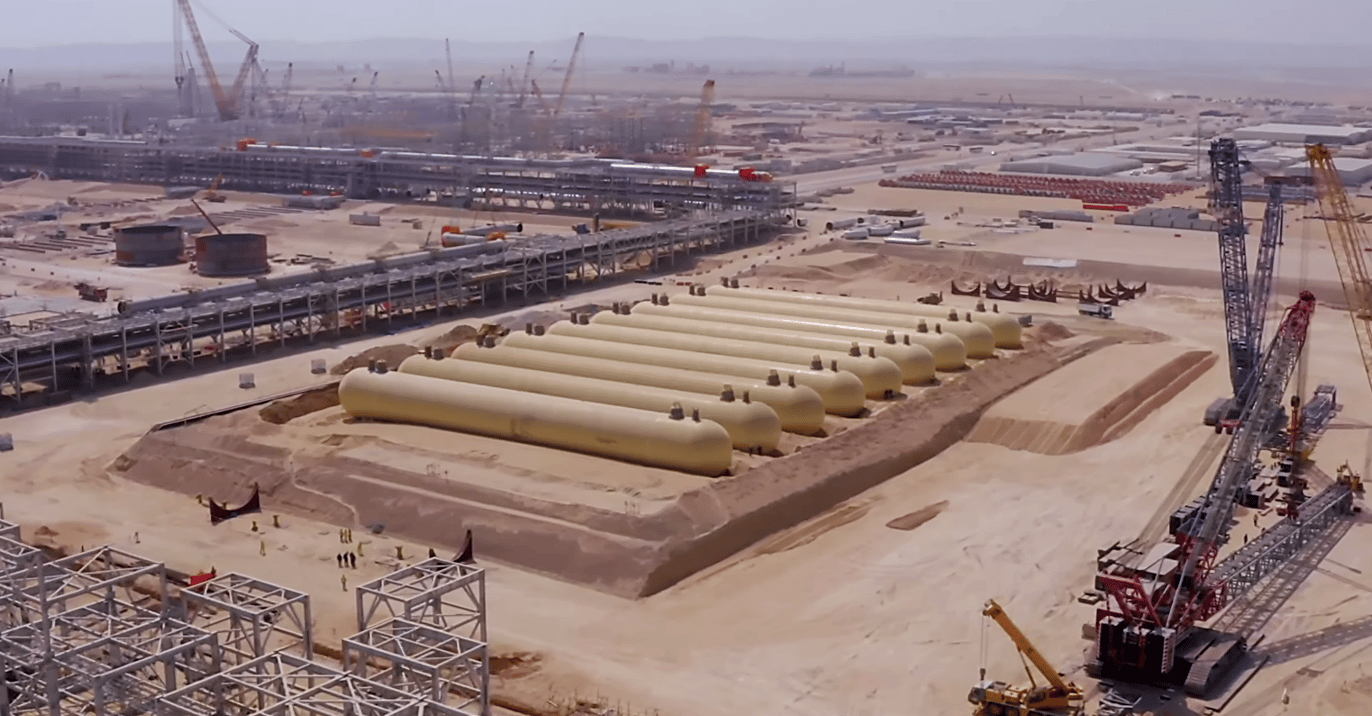
DELIVERY OF THE BOILERS
The assembly of three identical boilers – Alpha, Bravo and Charlie (later fondly named Aisha, Bushra and Kawatar) – was nearly complete at the vendor’s workshop in Venice, Italy, when the COVID-19 outbreak rushed the country into a strict lockdown. Petrofac engineers, reviewing assembly in Italy, managed to leave the country in the nick of time, but not before they acquired a permit that allowed delivery of the boilers to proceed as scheduled. Fabricated and assembled at the vendor’s workshop, each ‘Plug and Play’ boiler module was ready for commissioning soon after being installed. This modular approach was chosen to meet the project’s milestones and mitigate against unexpected challenges in the execution, such as delivery of parts from multiple countries. A decision that paid dividends considering the COVID-19 situation.
July 2020
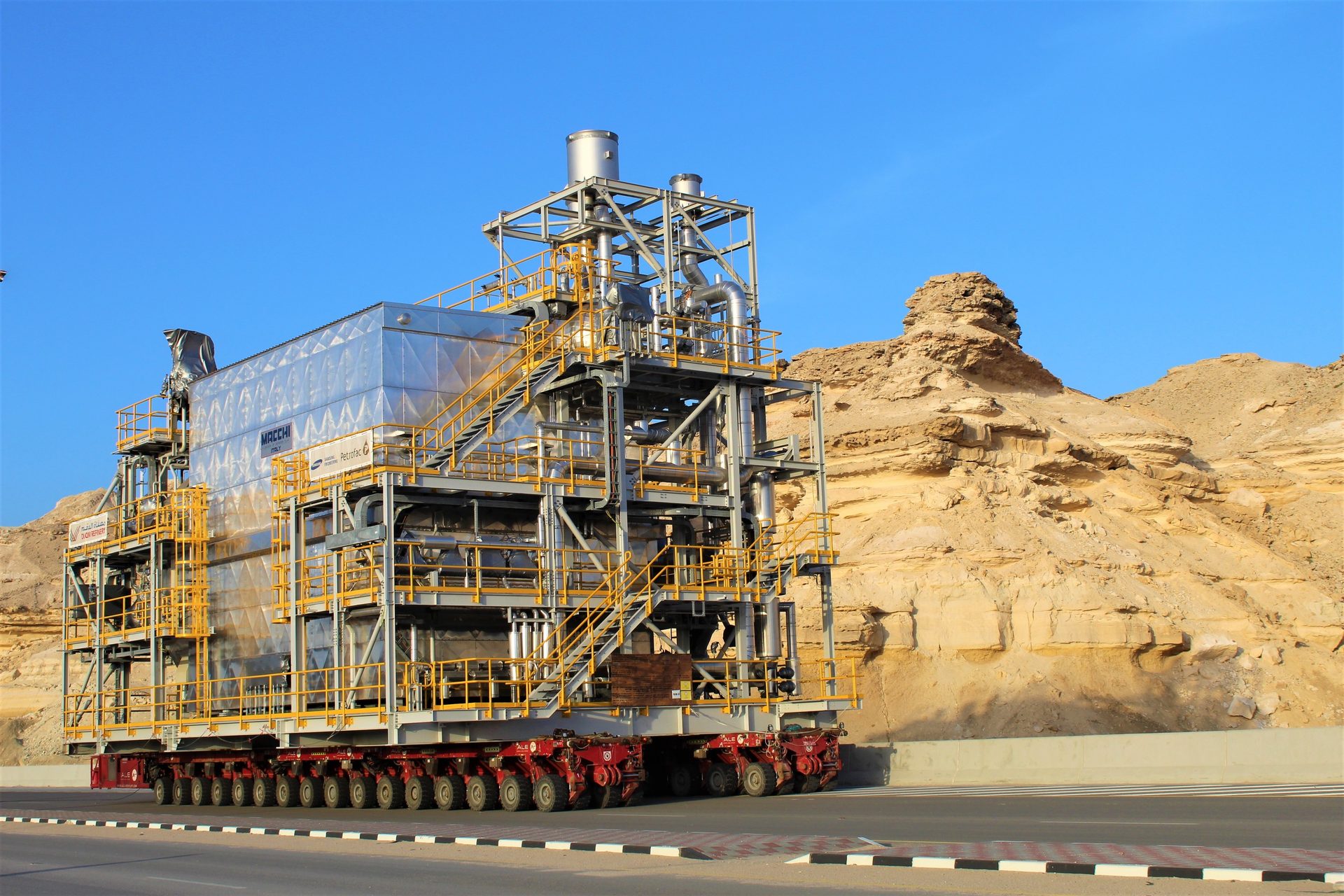
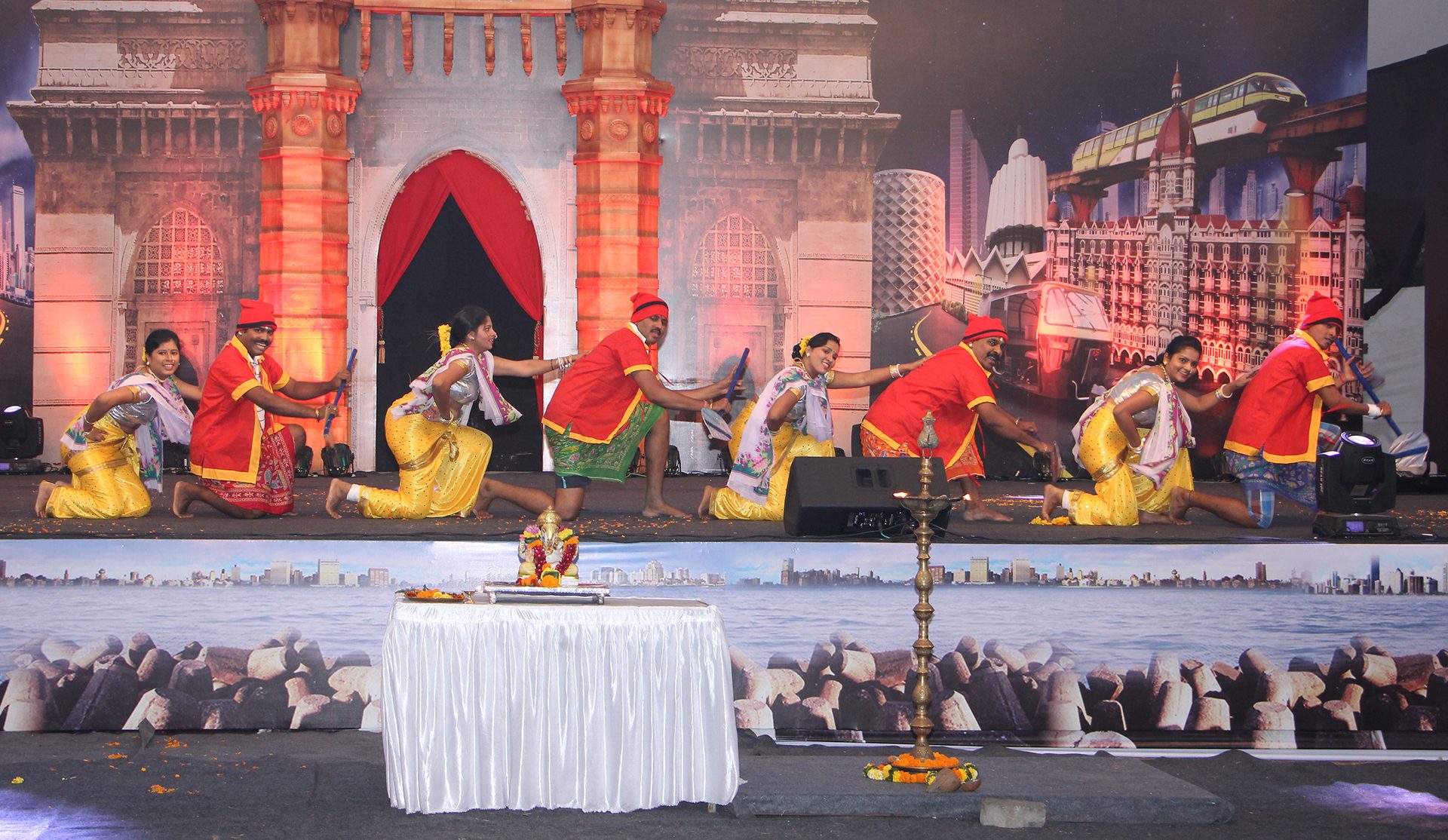
Colleagues marking our annual family day known as Parampara in 2015
INTRODUCTION OF HYDROCARBONs
Natural gas is needed to fire critical equipment in the refinery such as the boilers that produce steam and heaters that are used to refine liquid hydrocarbon to distillate the petroleum and other hydrocarbon derivative products from the refinery. When introducing natural gas, a flare is usually needed in case of a requirement to release gas safely to the atmosphere, for example in case of an overpressure within the process or an external influence requiring the gas to be released and burned. However, Petrofac’s engineers knew that to meet the project’s tight schedule, the boilers would need to start-up and be operating prior to the flare being available. They designed and fabricated a temporary facility called ‘cold-venting’ which meant separating the pipeline from the flare network and redirecting natural gas to a separate temporary stack for safe dispersion into the atmosphere. While only a temporary measure, this allowed the team to meet key milestones on schedule such as the production of steam.
June 2021
ENERGISATION OF SS-490
Substation SS-490 is where the incoming 132kV power supply from Marafiq (a centralised utility company) is received, and the cables, switchgear (GIS) and HV Control panels were energised for the first time in September 2021. This significant milestone meant power could now be distributed across the site’s various units via the other HP & LP substations on site, replacing the many temporary power supplies that were being used.
With vendor limitations on travel and delivery during COVID-19, the Petrofac team had to adapt to commission the 132kV GIS and automation panels needed for this energisation. They decided to put the power into their own hands (metaphorically). Petrofac organised the delivery and then managed the assembly of the GIS and automation system, as well as their commissioning and start-up, guided remotely by the distributors. This equipment is not usually put in service without the presence of vendors and multiple other teams due to the risks associated with dealing with such highly rated electrical equipment.
September 2021
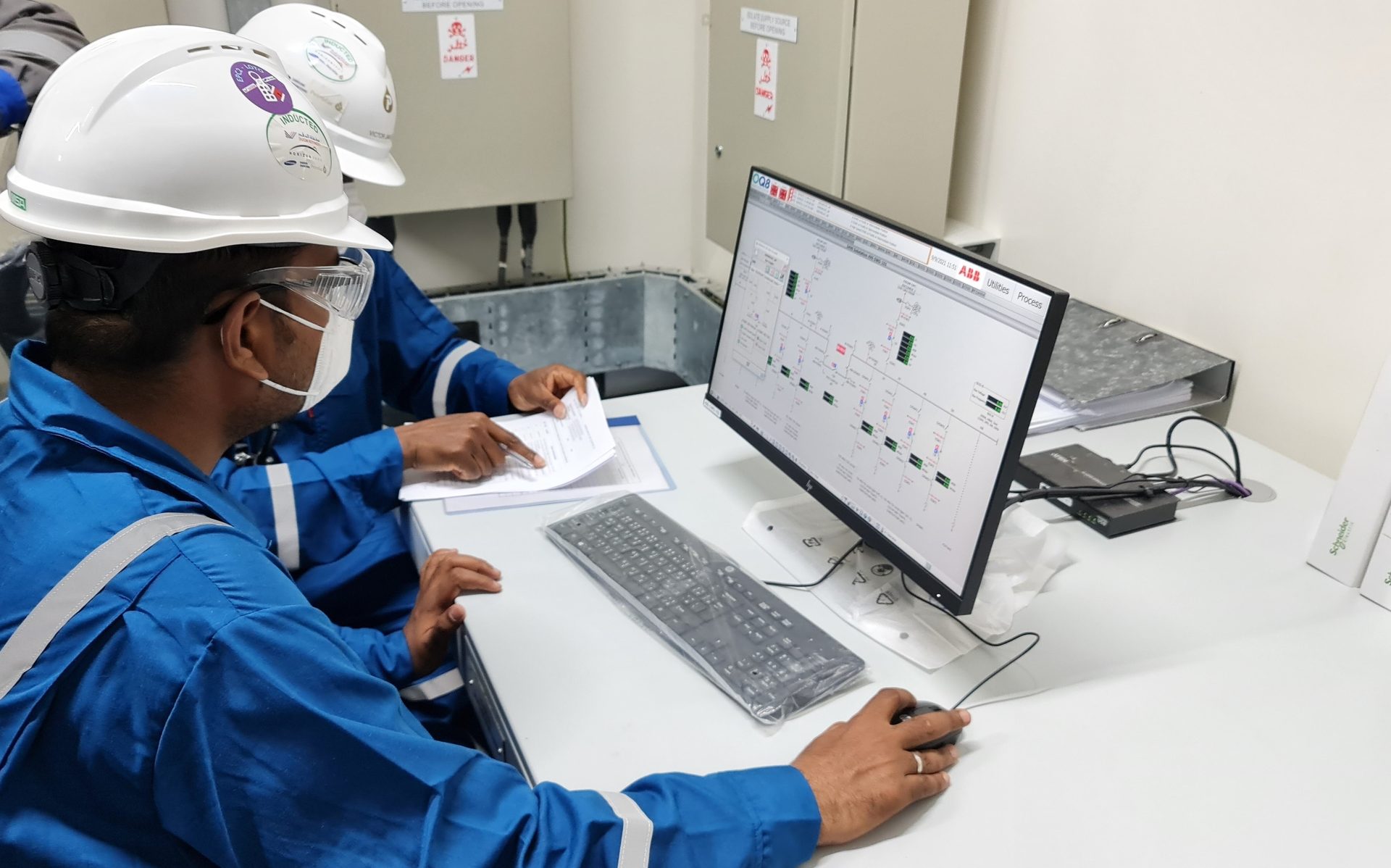
“This is one of the most remarkable things I have been involved in. Since the start of the project, our mantra in Duqm has been “whatever it takes” and our success with the transformers showed that we really put this into practice.”
Tarek Khazbak, Project Controls Manager
PRODUCTION OF STEAM
It is hard to over-emphasise the importance of steam in the industrial process, it constitutes a major part of a refinery’s utility system. Arguably the project’s most significant milestone, Ian Debattista explains, “Steam production was the culmination of our part of the project (utilities) coming to life.”
Steam is used in many different functions in the refinery, including operating industrial-size rotating machines such as pumps, where steam pressure is used rather than a motor for long-term cost and environmental savings. Steam is used to distillate the crude oil and produce different derivative products, as well as to keep certain liquids from solidifying. It is also crucial for cleaning and maintaining key equipment, including the pipe network throughout the refinery.
June 2022
“Right now, I’m remembering the moment we were able to announce that we had achieved our milestone of producing 175 tonnes of steam per hour and it still fills me with excitement.”
Nelson Hernandez, Start-up and Initial Operations Manager

PRODUCTION OF STEAM
It is hard to over-emphasise the importance of steam in the industrial process, it constitutes a major part of a refinery’s utility system. Arguably the project’s most significant milestone, Ian Debattista explains, “Steam production was the culmination of our part of the project (utilities) coming to life.”
Steam is used in many different functions in the refinery, including operating industrial-size rotating machines such as pumps, where steam pressure is used rather than a motor for long-term cost and environmental savings. Steam is used to distillate the crude oil and produce different derivative products, as well as to keep certain liquids from solidifying. It is also crucial for cleaning and maintaining key equipment, including the pipe network throughout the refinery.
June 2022
“Right now, I’m remembering the moment we were able to announce that we have achieved our milestone of producing 175 tonnes of steam per hour and it still fills me with excitement.”
Nelson Hernandez, Operation and Maintenance Manager

INAUGURATION OF THE MAIN ADMINISTRATION BUILDING (MAB)
This milestone was a further indication that the project was on its way to being handed over to the client, OQ8. The MAB is a vast three-storey office complex that has the capacity for over a thousand personnel. The building has a sleek design with modern architecture and is equipped with many facilities including an auditorium, a professional kitchen serving the canteen and even a small museum on the ground floor for OQ8 to showcase their heritage and work in the Sultanate of Oman.
October 2022
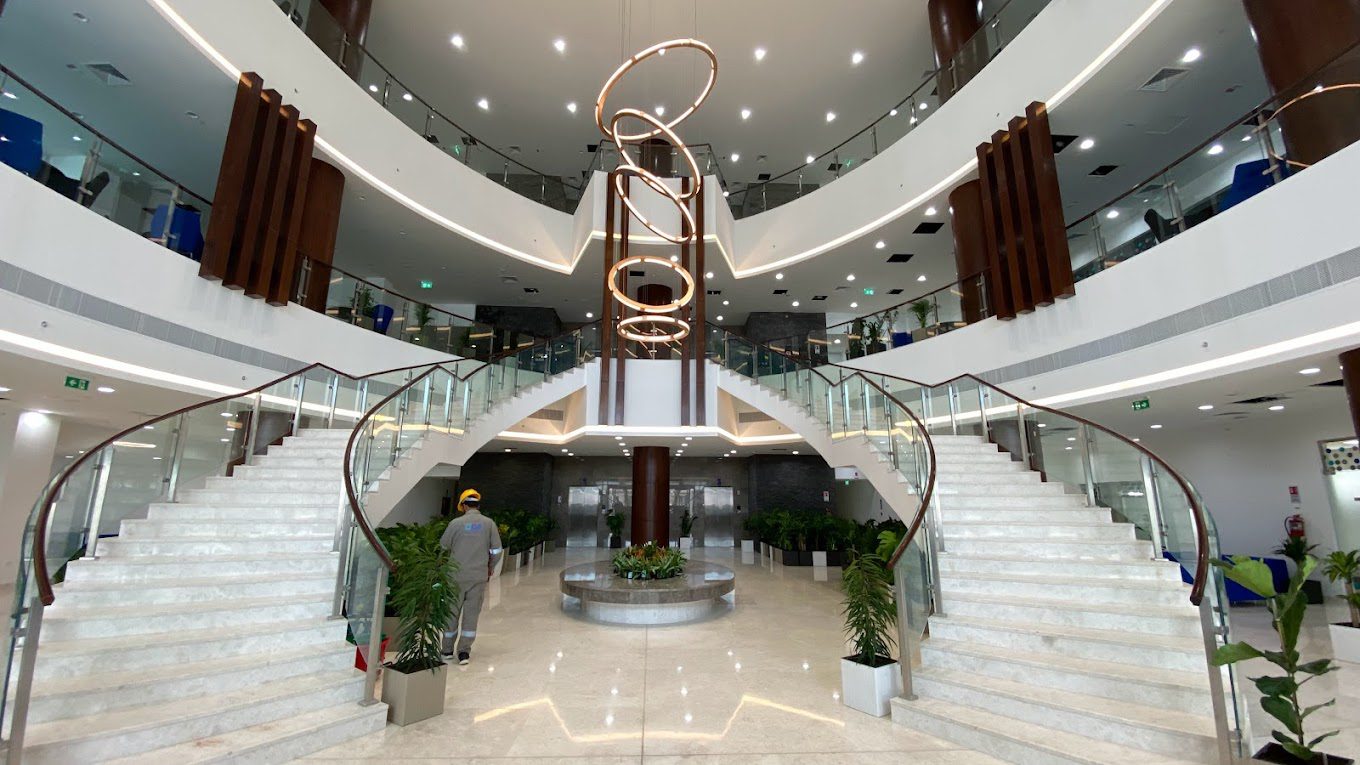
LIGHTING OF THE FLARE
As mentioned, the flare is used to disperse and burn gas and other hydrocarbon products from the refinery in case of an emergency. There are in fact six flares on the refinery, five of which are combined into one major flare derrick structure that is over 180m tall. The flare is fed by a number of main headers to which a network of pipelines that branch across the refinery connect. One of the key challenges leading up to the lighting of the flare was that all pipeline operations, including those in EPC 1, had to be shut down while the flare headers and the entire network were prepared. The flare network was purged with nitrogen at various points to remove oxygen that could form a volatile mixture with gas and cause an explosion when ignited. Natural gas could then be injected into the pipelines and out through the flare. Time was of the essence – any more than a complete shutdown of 12 days would jeopardise the commissioning activities of our partners in EPC 1. The flare lighting on schedule sparked a huge sigh of relief around the camp and sent a visible signal all around the city of Duqm that the refinery was very much alive.
November 2022
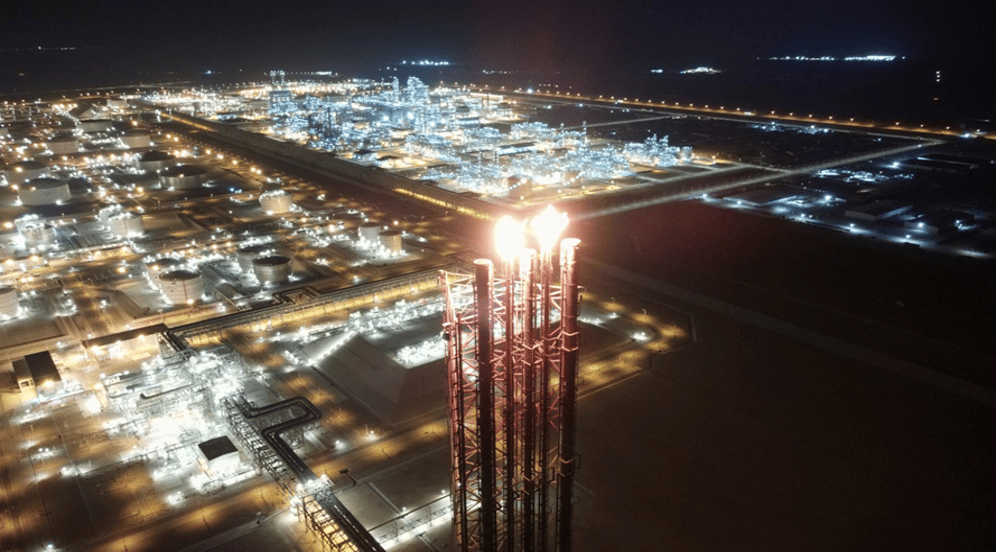
READY FOR START-UP CERTIFICATE
132,000 check sheets have been completed so far as part of Petrofac’s scope on the Duqm Refinery. These occur throughout the project and include activities such as hydro-testing welded pipelines by blocking the system at both ends, pressurising it with water and checking for leaks to ensure that the mechanical design properties of the pipework have been achieved.
The client witnessed all inspections with the team throughout the project and the Ready For Start-up Certificate (RFSUC) signified that all checks were complete and that the plant was now fully commissioned.
December 2022
“Testing is critical. When you're working with hydrocarbon there is no space for error.”
Tarek Khazbak, Project Controls Manager
INTRODUCTION OF CRUDE OIL
The result of all the hard work. Crude oil was finally received at the refinery through a pipeline from 80km away at the Ras Markaz facility, constructed by our EPC 3 partners. One of the challenges here has been managing the speed of the oil’s journey to the refinery. The pipe has to be thoroughly clean and the velocity by which the crude oil moves along the pipeline should be slow to avoid picking up any sediment that would turn it into sludge.
Speaking to Petrofacts only a week after the introduction of crude, the team shared that around 125,000 cubic meters of crude oil (approx. 800,000 barrels) had been loaded to the storage tanks and that the system is ready to feed crude oil to the distillation unit (CDU) of the refinery on a continuous basis.
February 2023
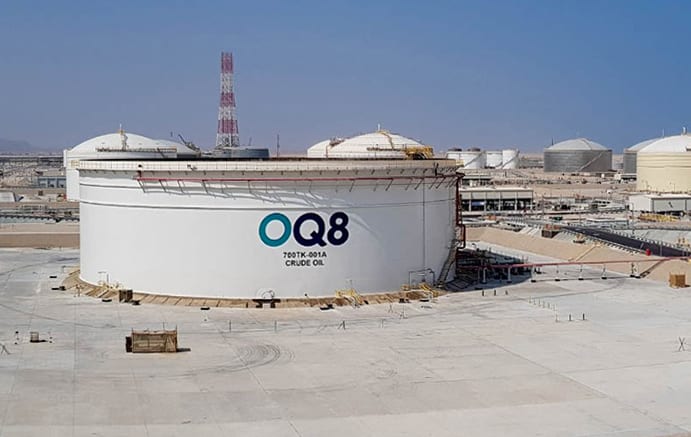
“This was the major feat we were working for: to supply the product to the crude distillation unit and start the production of naphtha, jet one, kerosene, diesel and petrol.”
Nelson Hernandez, Operation and Maintenance Manager
OUR WORK IS NEARLY DONE
As things stand, the project is expected to be completed and the Initial Acceptance Certificate (IAC) issued towards the end of 2023. At this point, Petrofac colleagues on site will conduct final performance and capacity checks, inspect the quality of products and hand custody and care of the refinery over to OQ8.
Through sweat and tears, Petrofac have managed this project for over five years with resilience and pride. The finish line is within touching distance and colleagues are confident that they’ve done everything in their power to reach it comfortably… although fingers are still firmly on the wheel, safely steering the way to the finish.
